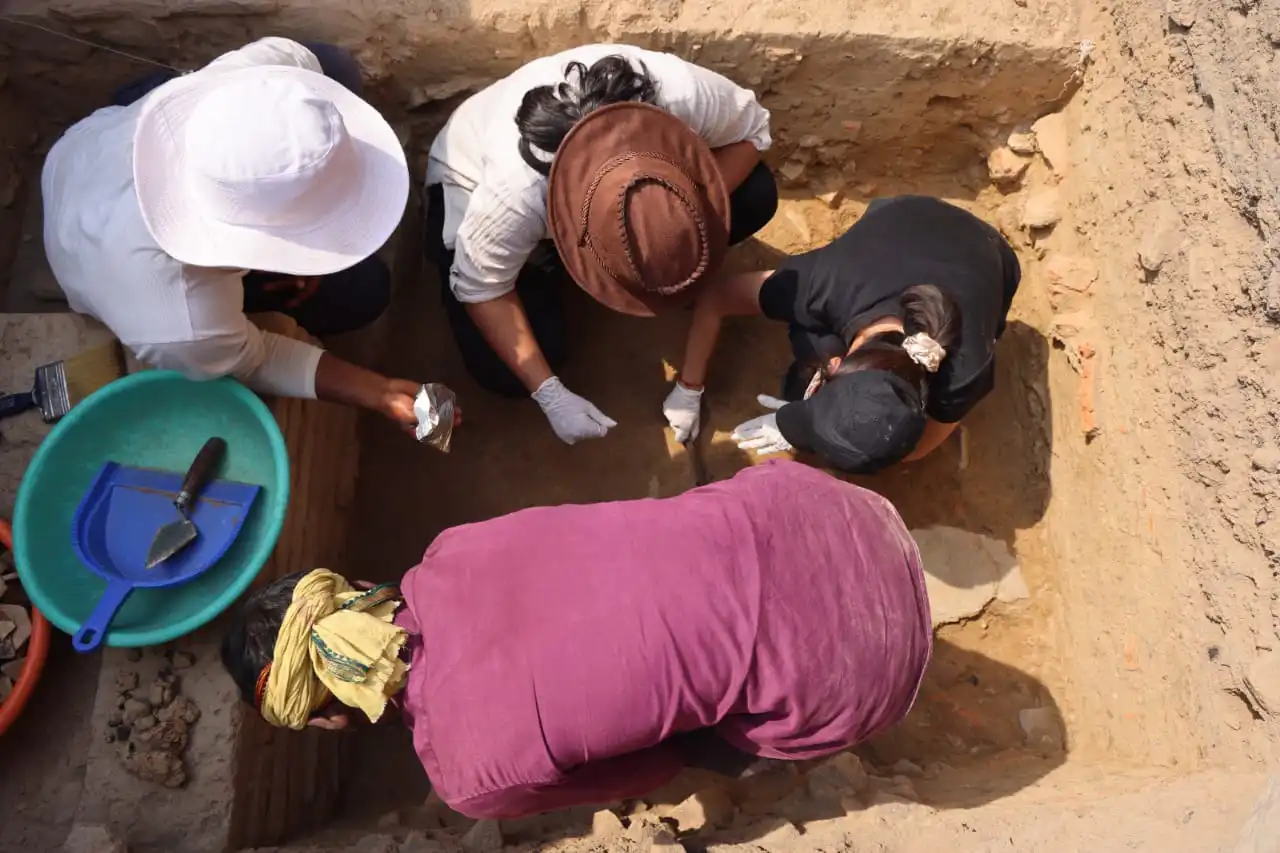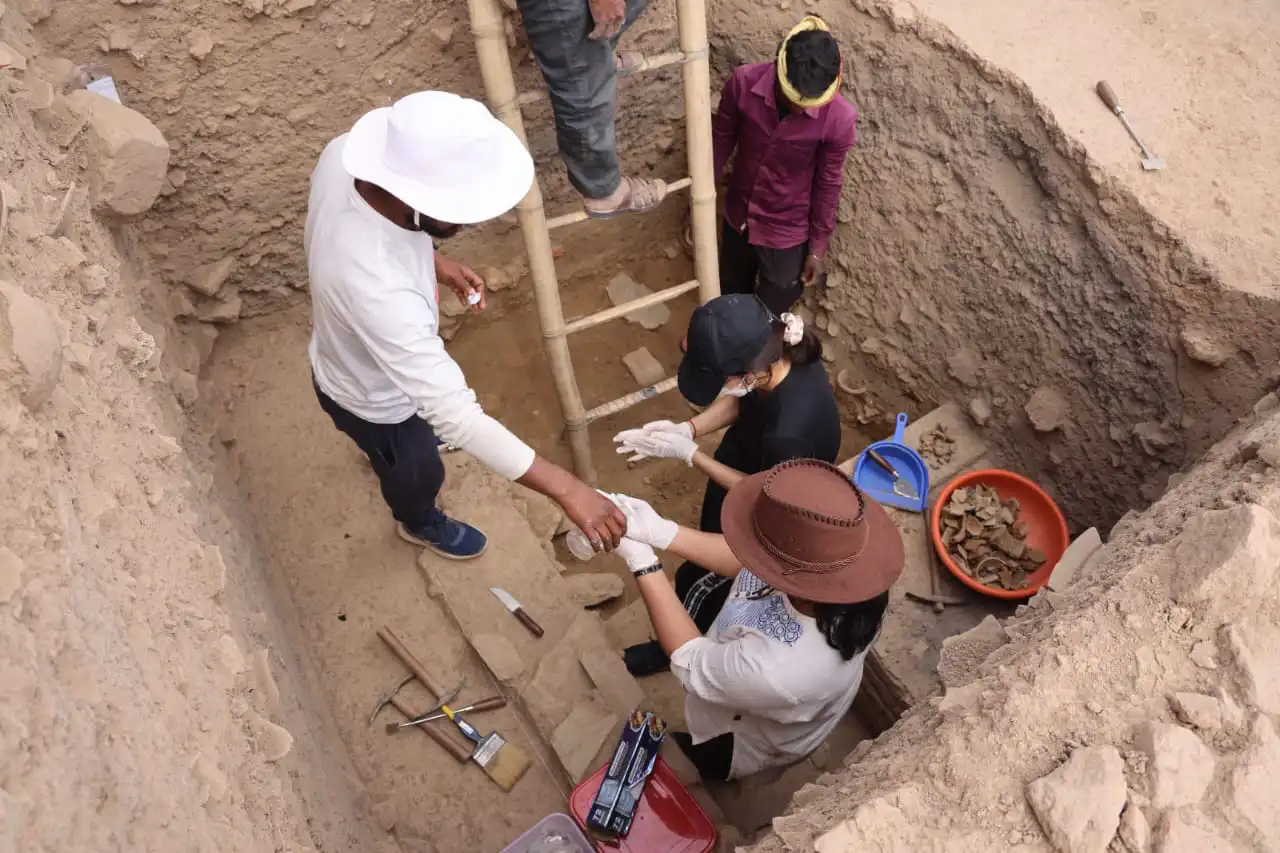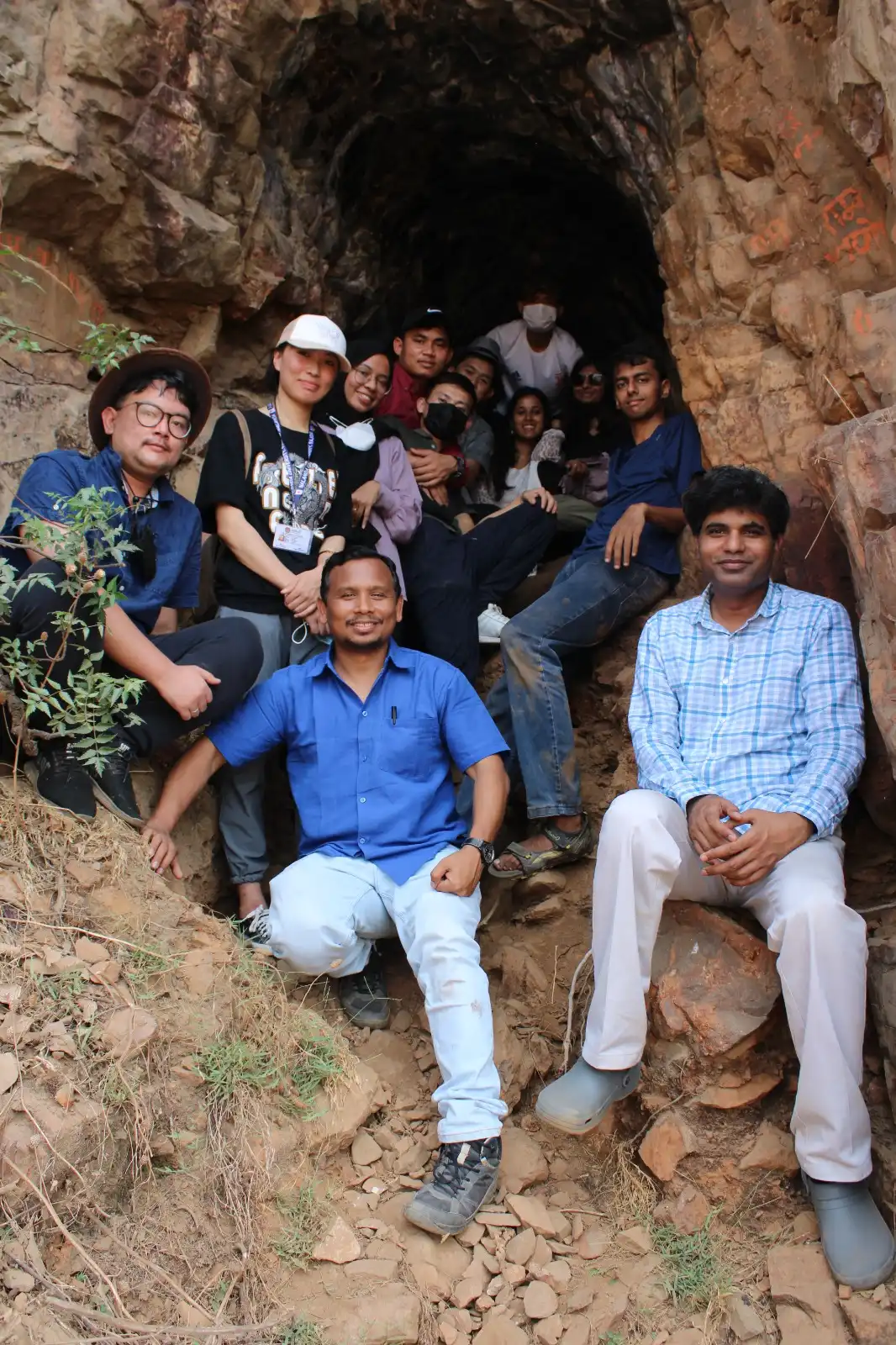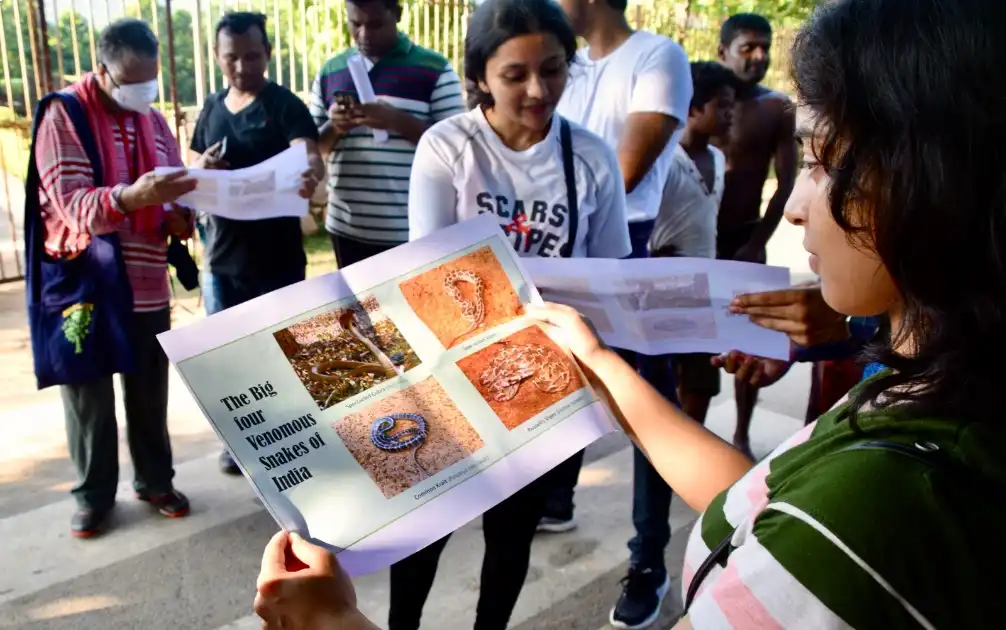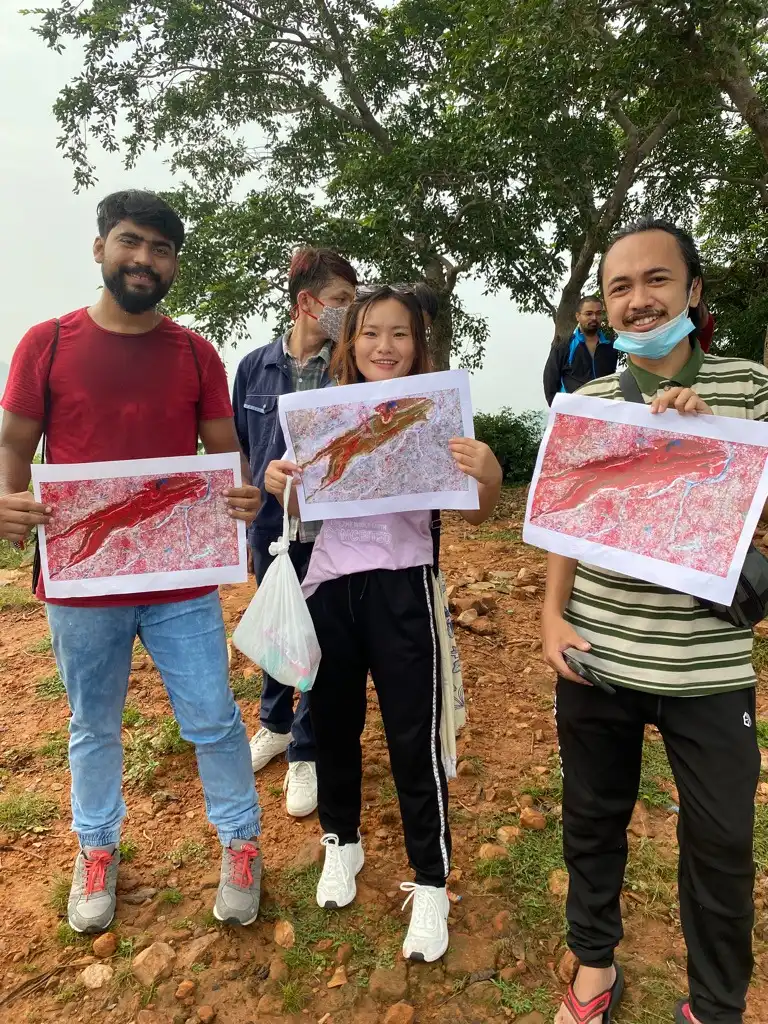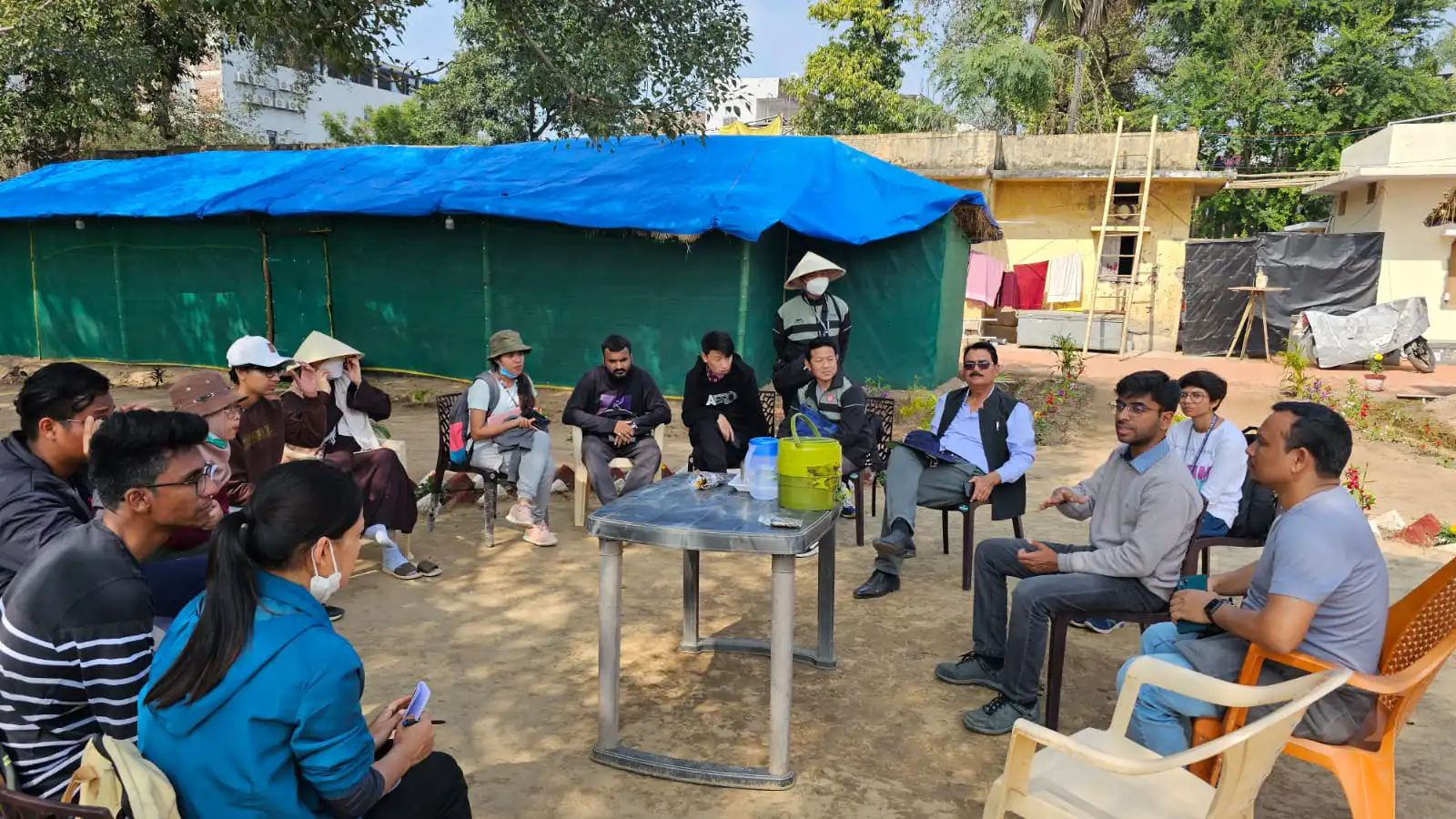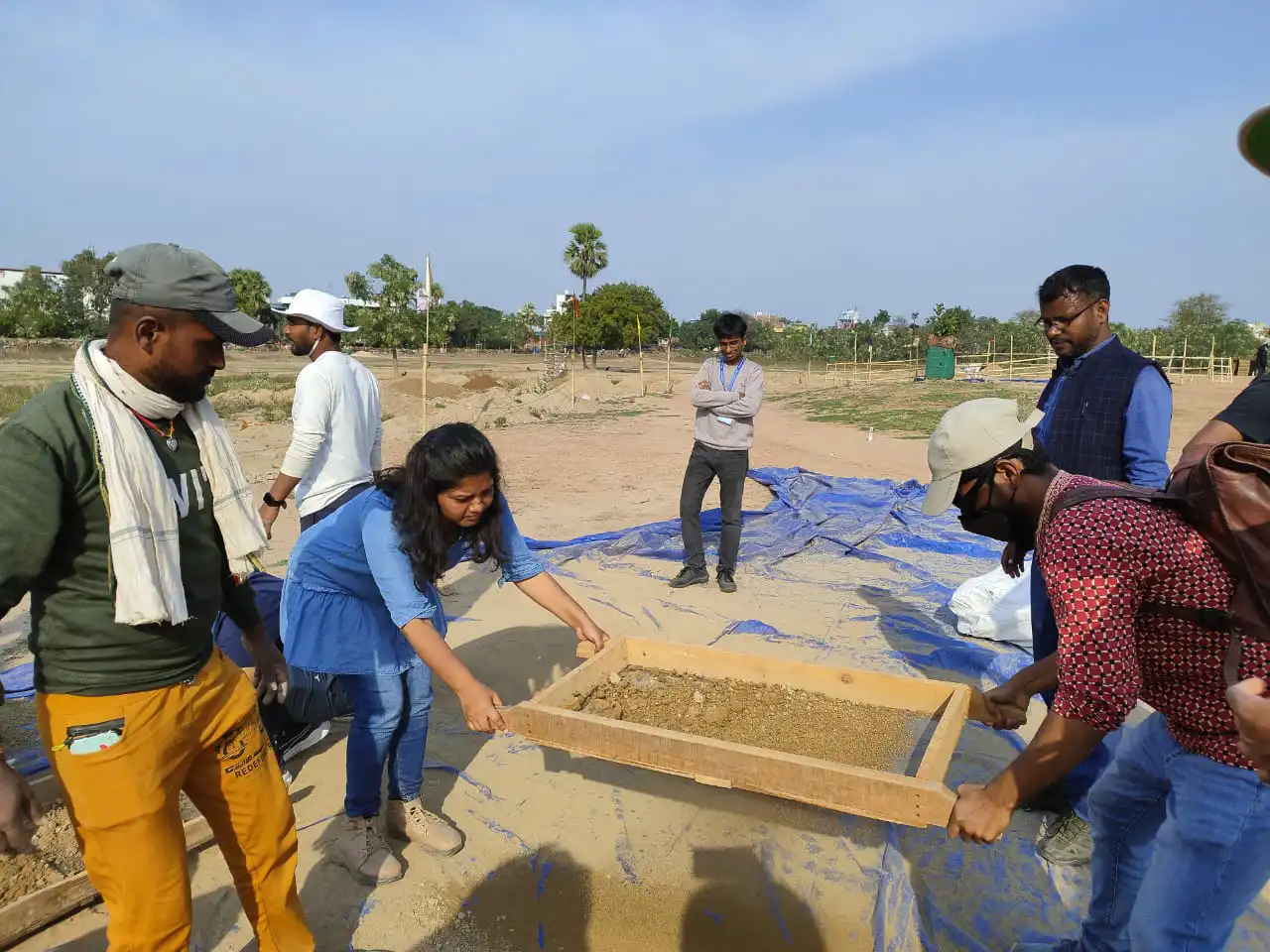Campus Amenities
The Campus facilities play a pivotal role in improving the overall learning process, as well as, the mental and physical growth of the students. An adequate and right logistical support is a vital contribution provided at the Nalanda University towards facilitating a smooth run of academic activities, such as learning, teaching and research.
Access to the University Campus
Entry into the University campus requires due validation and visitors access is restricted for reasons of security. A visit pass is issued to the visitor by the Security.

The University Library
The Central Library’s six storeyed Stupa shaped building, with a built-up area of 17,545 square meters is envisioned to provide state-of-the-art facilities, houses contemplative spaces for studying, presentation and seminar rooms with access to video conferencing and podcasting facilities, art galleries, archival section and music room, cafés, student and faculty lounges, etc. Having an outer radius of 81 meters at base and the crowning height of 26 meters, is probably the biggest stupa shaped building in the world.

Residence Halls / Hostels
The Residence Halls/ Hostels, like the Viharas of Nalanda, represent a very compact unit. The public spine along the central wet lands connects all the clusters and the amenities together. Each cluster caters to 80-100 students and total 24 buildings around 450 capacity Residence halls are currently boarded.
- Tathagat Residence Hall for Women
- Ajatshatru Residence Hall
All the Residence Halls are allocated to the students based on their respective preference of rooms, but on first-come-first served basis. All the facilities like indoor and outdoor games, common hall, computer lab, Wi-Fi, students’ pantry etc. are provided within the boundaries of the Residence Halls.



Dining Hall
The air conditioned Dining Hall is spacious with a capacity of over 1000 seats to comfortably serve food to students in hygienic atmosphere.




Cafeteria
The outdoor and indoor cafeteria are situated beside the landscaped garden of Campus Inn Guest House and Sushma Swaraj Auditorium. The snacks, savouries, sweets, coffee, tea, juices, beverages and mini- meals are served since 10:00 in morning to 7:00 in evening.


Shopping Complex and Arcade
A shopping complex with a food court and shops selling essential provisions and standard products, is situated near Kamal Sagar quadrant, which is a live spot for pleasant shopping inside the campus. Facilities of banking and other needed daily utilities are comfortably at hand. The adjoining Shopping Arcade is an upgraded market space for exhibition-cum-sale showrooms offering merchandise for shoppers.

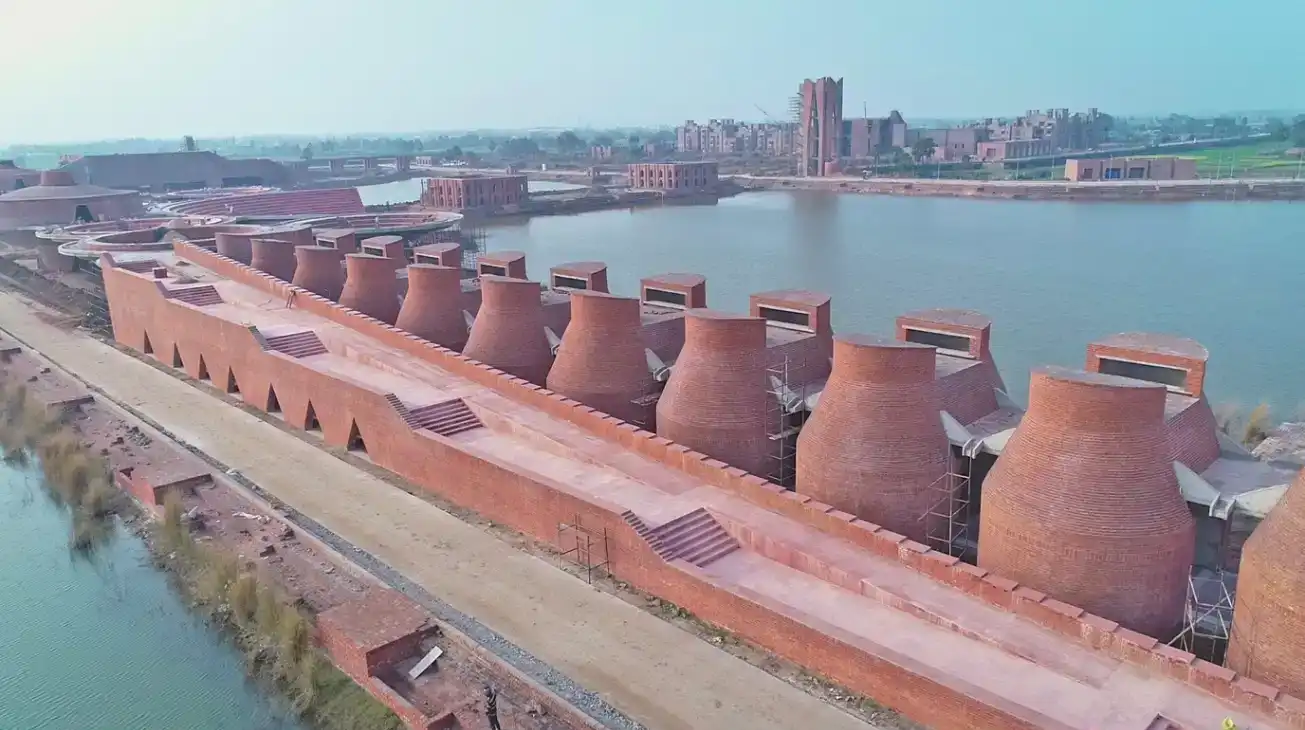
Campus Arcade
Kamal Sagar – The Central Water-body
Like early historic settlements, a lake forms the central space of the campus. Kamal Sagar, the man-made lake with four quadrants was created after careful analysis of the terrain and flooding pattern of the site and is fed by a network of storm water channels for rain water harvesting. The Kamal Sagar holds a pride position in the net-zero campus of Nalanda University.
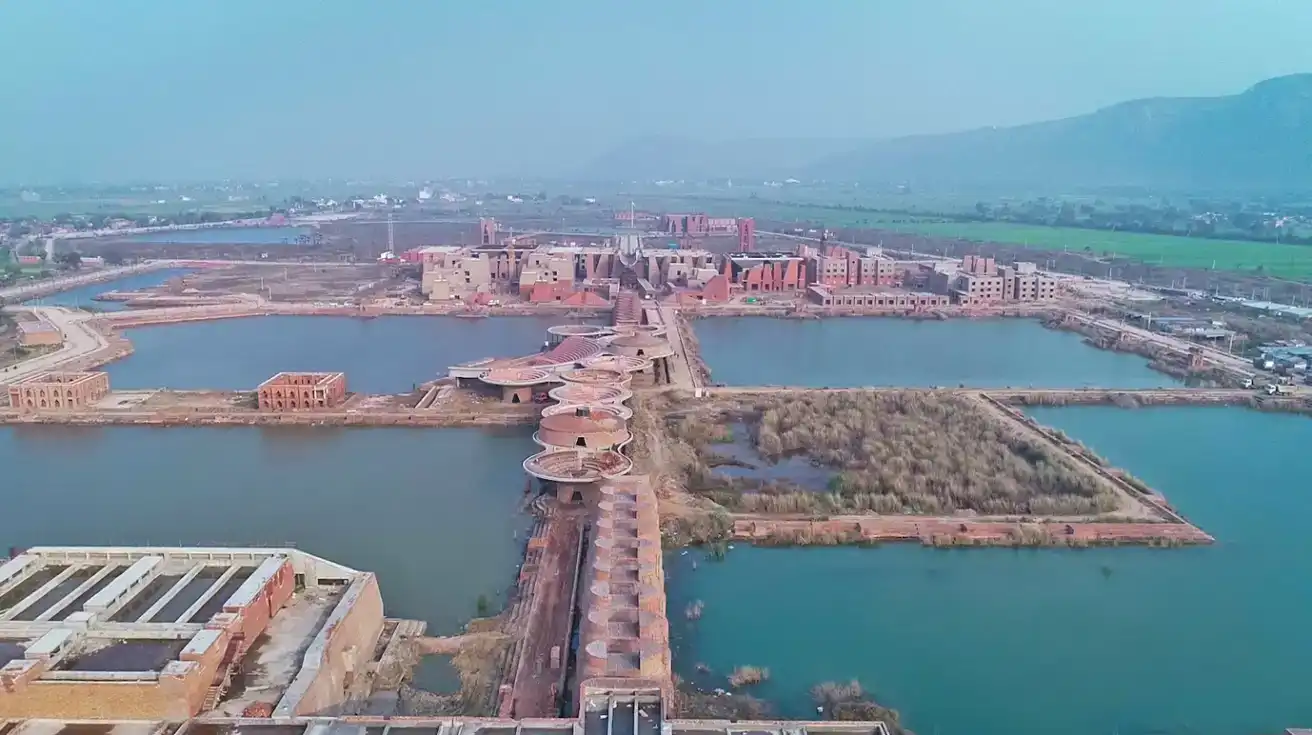
40 Hectares of Waterbodies
Amphitheatre
The grand amphitheatre with a capacity of around 2000 spectators is situated amidst the central part of the Kamal Sagar. The surrounding huge water body gives the audience an extravagant picturesque view in the backdrop of the stage. There are 11 other circular amenity modules nearby.

Meditation Hall
Rounded halls with an emerging flattened dome ceiling are particularly designed for the practical meditation sessions and chanting. These halls for the experiential learning and practice of peaceful life-style are unique.

Open-air roundel theatres
The several open-air roundel theatres are used as pleasant spaces for lectures, discussions, enacting or demonstration. These environment-friendly open-to-sky spaces are purposeful, as often desirable for breaking the monotony and formalism of the regular classrooms and conducting engaging class-talks.

Auditorium
The 300-seater Sushma Swaraj Auditorium and a 100-seater Mini Auditorium with modern Audio-Visual facilities, including facility for Video Conferencing are well equipped to host seminars, conferences, lectures of distinguished speakers and cultural programmes.
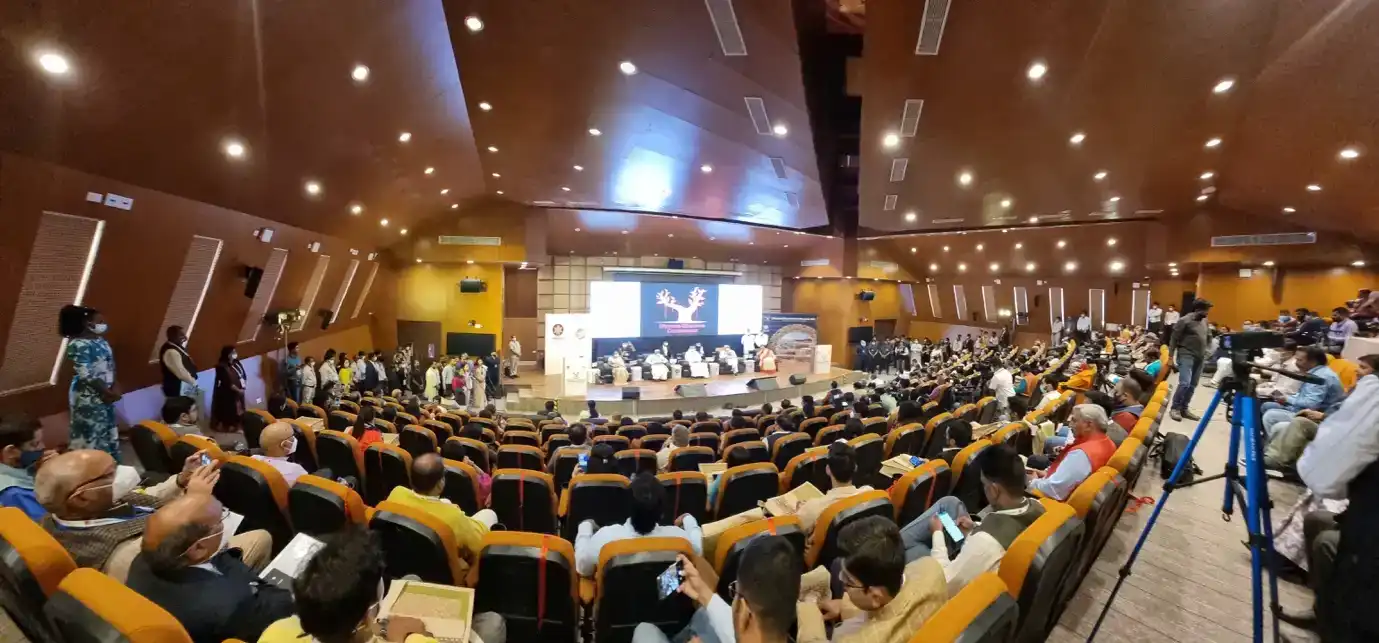
An interior view of the Auditorium
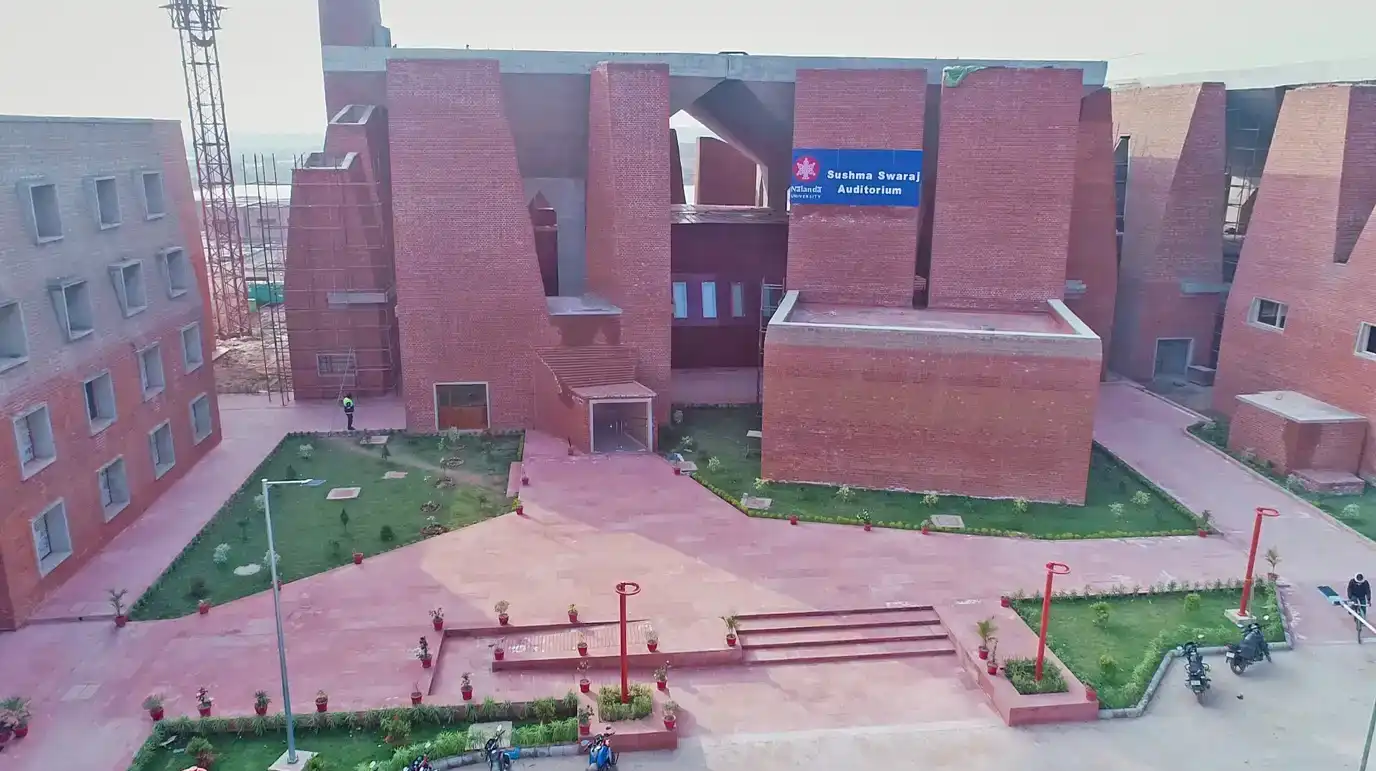
Sushma Swaraj Auditorium
The Yoga Complex
Set among the greens, the Yoga-cum-Meditation Centre is ground plus one floor circular building with a built-up area of 4186 square meters with a conical-spherical dome. The ground floor is a 500 capacity multipurpose hall, and the first floor is the Yoga studio with 266 yoga-mats capacity. A VIP annexe lounge facility is connected with the Yoga hall through a sky bridge. Remarkably designed halls are free of any obstructions of pillars.

Sports Stadia
Outdoor Sports Stadium complex with athletic track
Nalanda University endorses the view that sports play a pivotal role in shaping one’s personality and in maintaining good health. A flood-lit high-quality outdoor stadium facilitating sports like football, hockey and athletic events, with the quality artificial track laid down for racing, is a charm of the campus. Adjoining is the Cricket pitch as cricket is a popular outdoor game in the campus.

Indoor Sports Stadium complex
The Indoor Sports Stadium complex has all facilities for the sports like Volley ball, Badminton, Squash, Basketball, Billiards, Chess, Carom etc.
Well Equipped Gymnasium
An air-conditioned gymnasium with all required exercising equipment, including commercial treadmills, cross-runners, spin-bike machines for cardiovascular activities, various weight training equipment, namely, chest-presses, leg-presses, lat-pulldown, leg extension hack squat, Pec Dec Fly, Smith machine, adjustable benches, Abs coaster machine , etc.
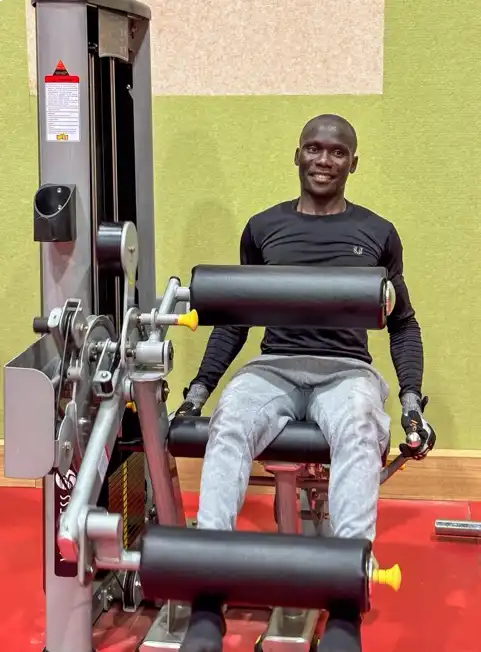
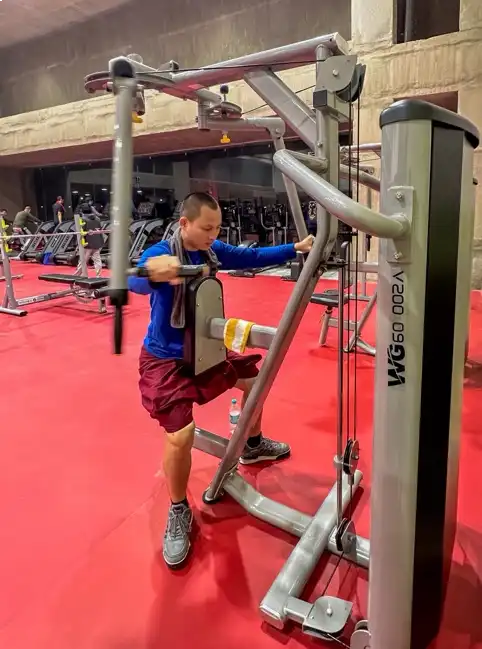
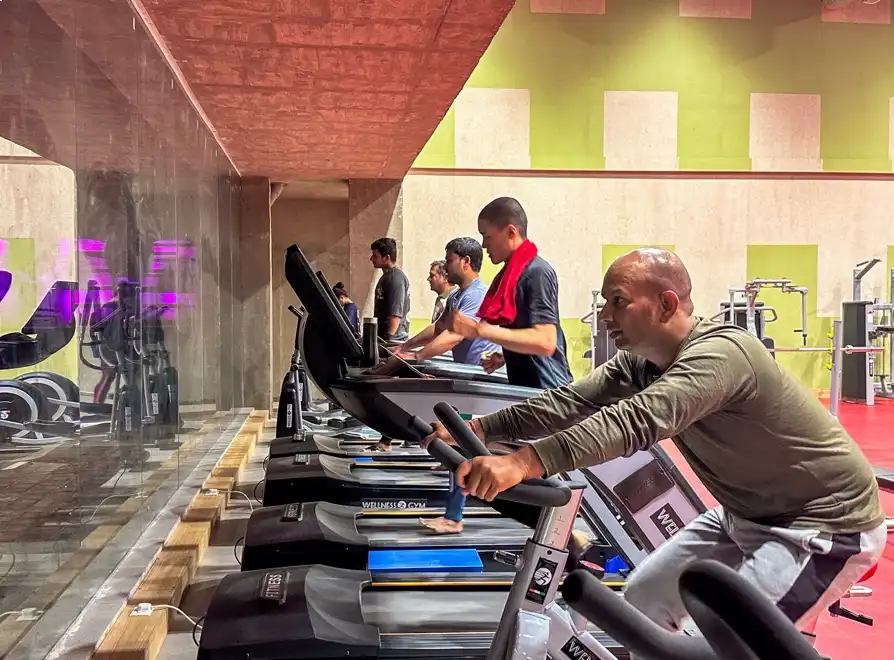
Academic Spine
The Academic Spine is spanning in the North-South direction of the Campus. It houses around 25 various capacity classrooms (25-seater to 100-seater) to accommodate 1360 students at a time; meeting and discussion rooms, Faculty Offices, Laboratories, a 100-seater Mini-Auditorium, offices of the Controller of Examinations, and International Relations, etc. In the Southern side of the spine the Sushma Swaraj Auditorium (300-seater) is situated followed by two guest houses namely, Campus Inn and International Center.

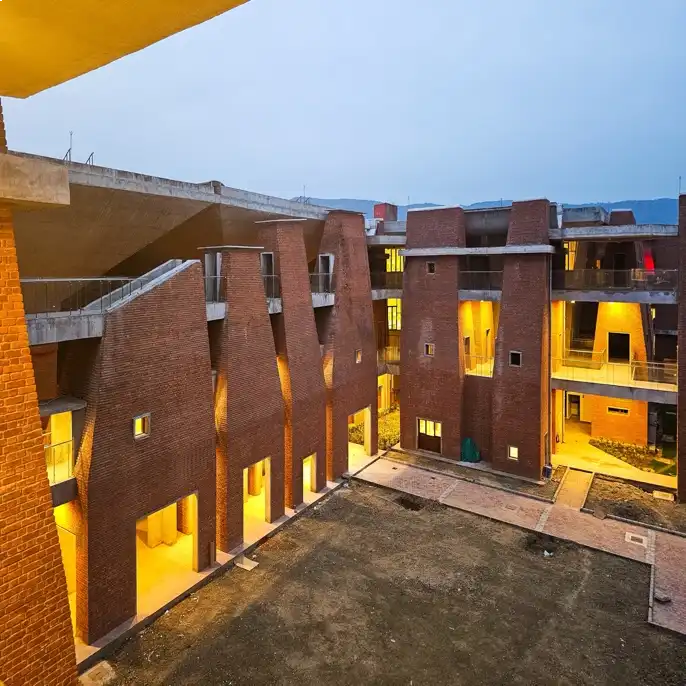
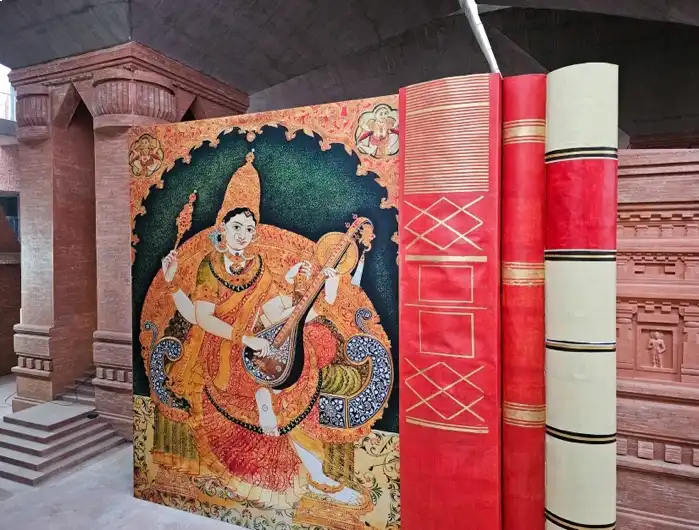
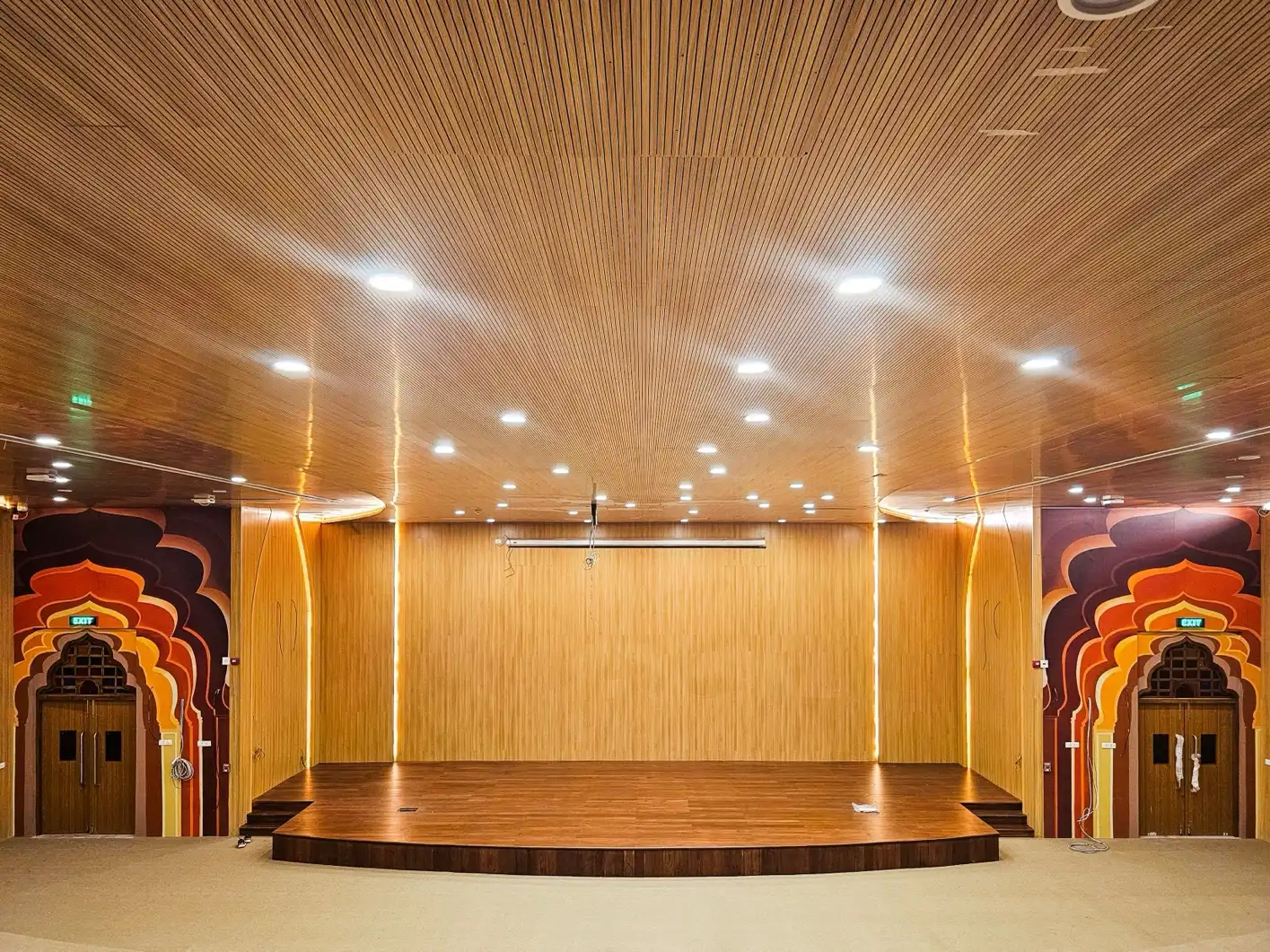
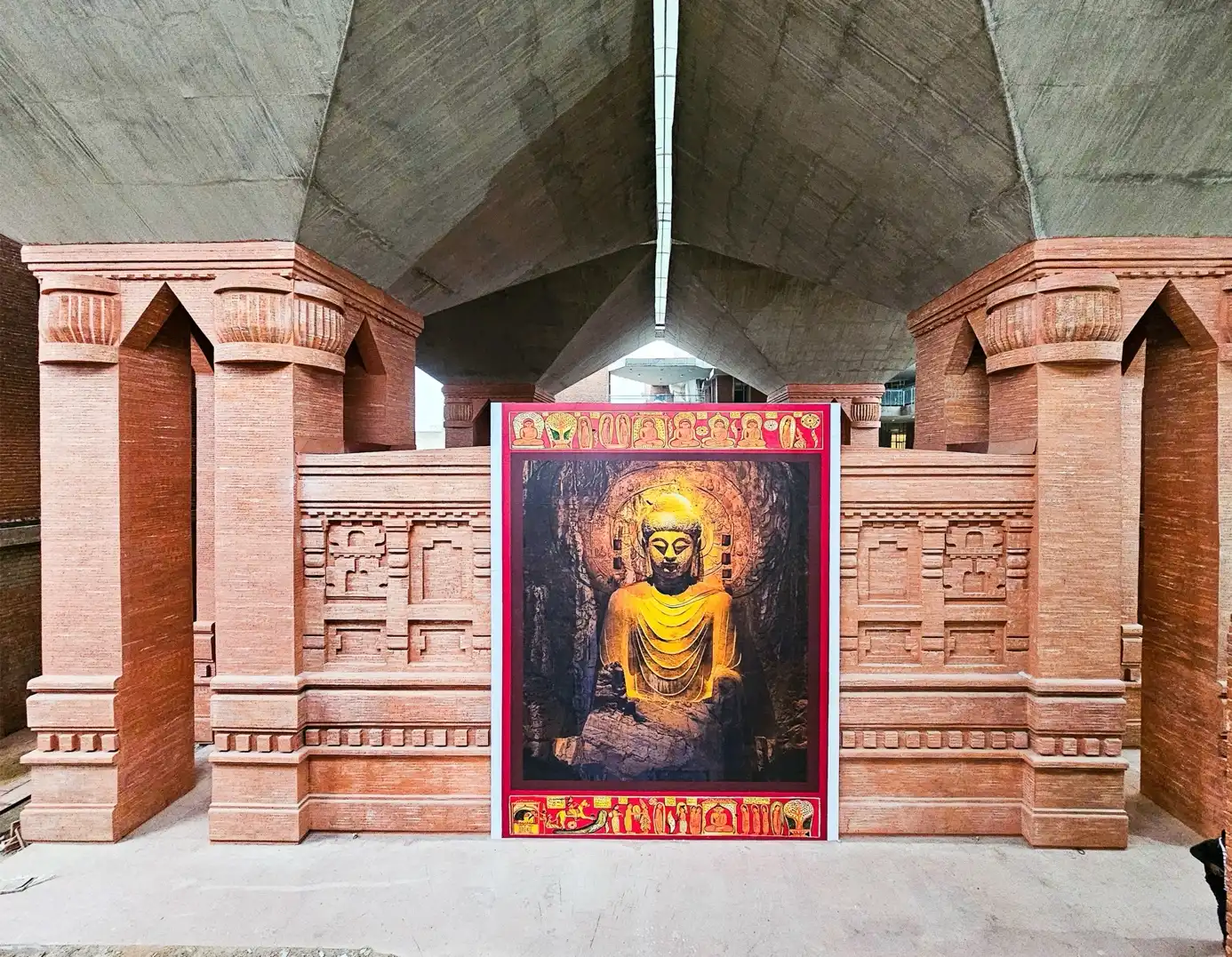
Computer Lab
Campus computer labs serve to integrate technology with higher education by providing users with multimedia services, computing-related services and workstations for instructional use as well as research. The Computer Lab is equipped with the latest technology and software, including all the necessary research tools, e.g., GIS, Matlab, and MiniTab.
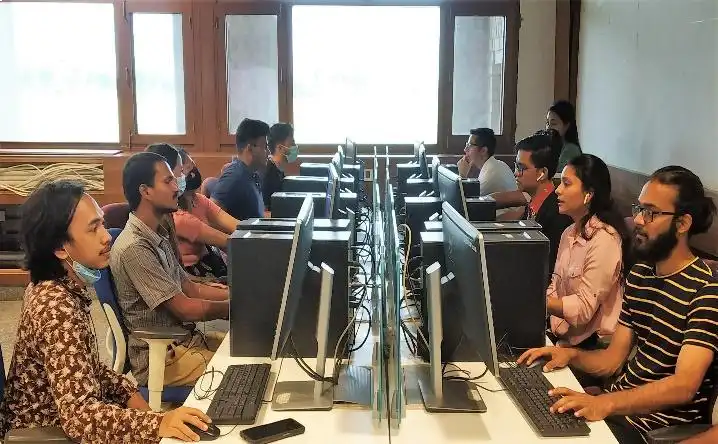
Language Lab
The language laboratory facility is planned to be a dedicated space for foreign language learning, where students can access audio or audio-visual content. This allows a teacher to listen to and manage student audio, which is delivered to individual students through headsets or in isolated ‘sound booths.’
Medical Facilities
The university has a state-of-the-art Primary Medical Centre, functioning as a mini-hospital strategically placed on campus to cater to the diverse medical needs of the Nalanda community. This facility stands committed to providing round-the-clock access to health services, ensuring the well-being of our students, faculty, and staff.
At the core of the health care team are 15 dedicated staff members, comprising two Resident Doctors, five Nurses, one Ward boy, and a managerial professional. Additionally, specialized consultations, with a Visiting Consultant (MD in medicine), a Gynaecologist and other specialise is available.
Our Health Care Centre is equipped with essential medical amenities, including X-Ray facilities, Minor OT/dressing rooms, a Pathology Laboratory, ECG services, an on-site Pharmacy, and an Ambulance service that operates 24/7.
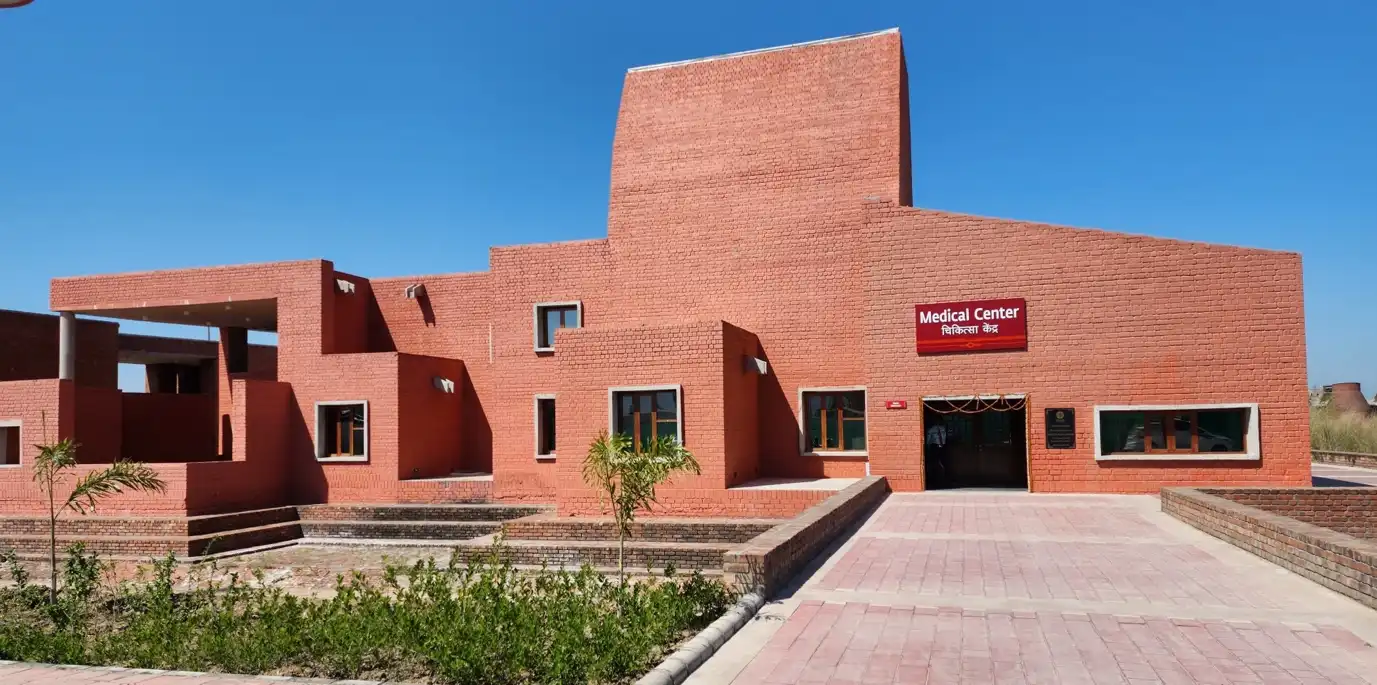
Transportation
Frequent Shuttle services are provided for ferrying students from residence halls to academic block and library and for their return.
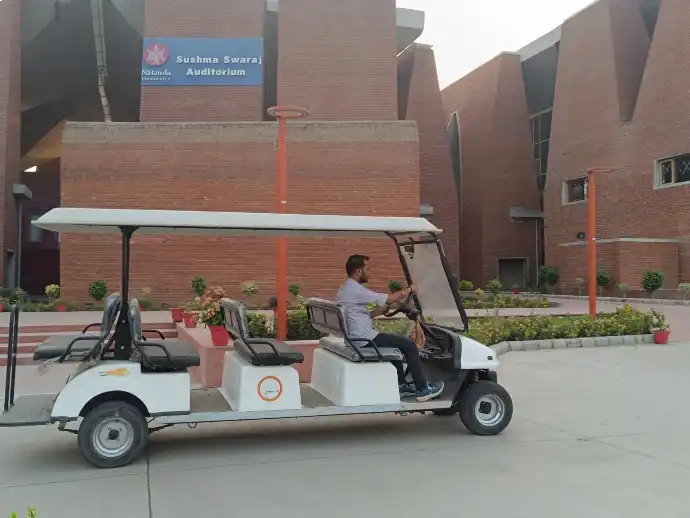
Campus Inn / Guest House
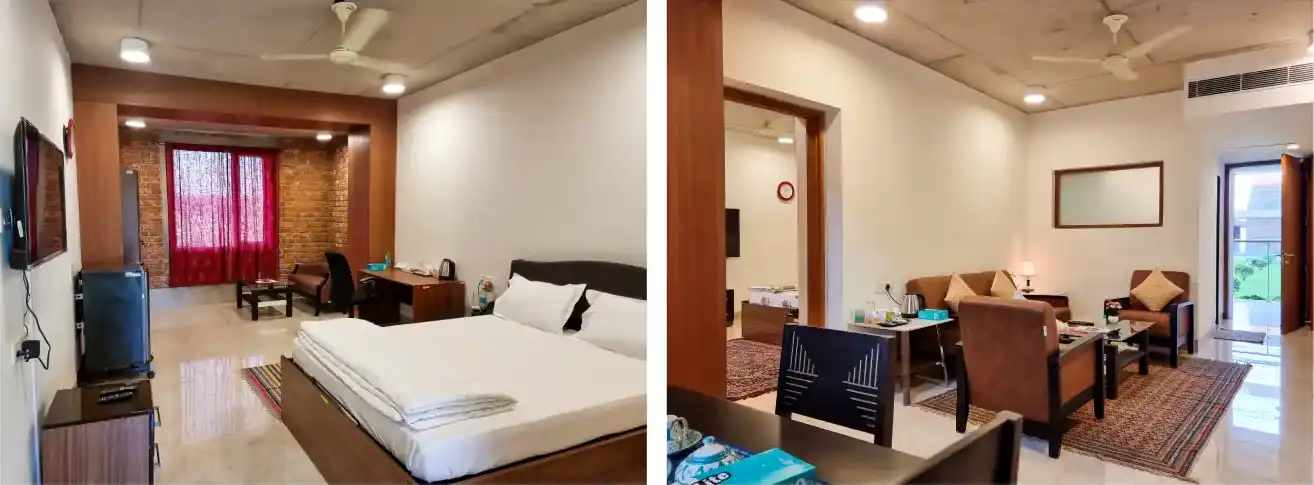
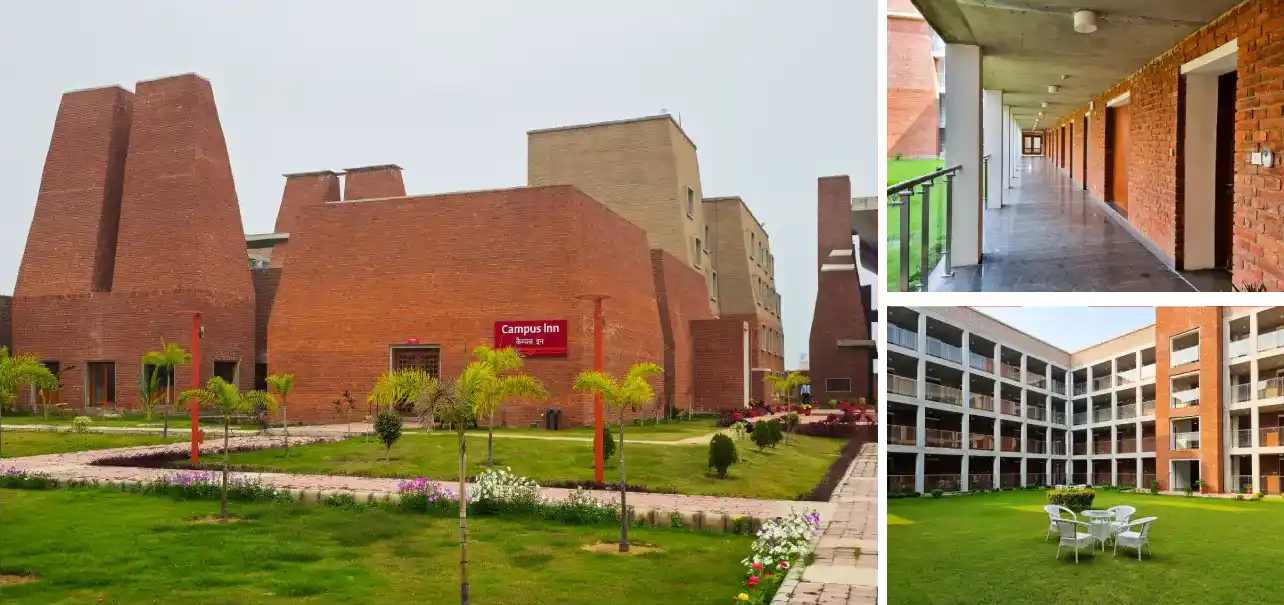
Nalanda University's Campus Inn/Guest House is a harmonious blend of comfort, convenience, and cultural richness nestled in the serene surroundings of Rajgir. Offering a respite from the bustling academic life, it serves as a welcoming abode for scholars, visitors, and guests alike. With room and suites equipped with all amenities to provide comfort.
International Center
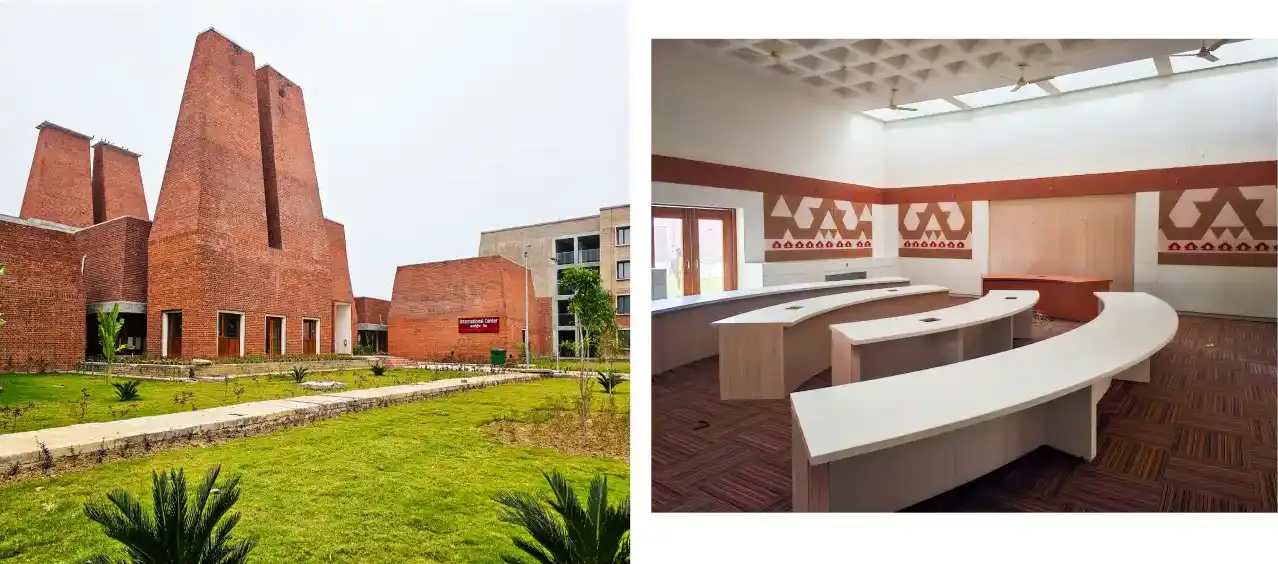
E-Spine (Examination Center)

E-Spine (Exam Center)

Round Table Conference – in Block D
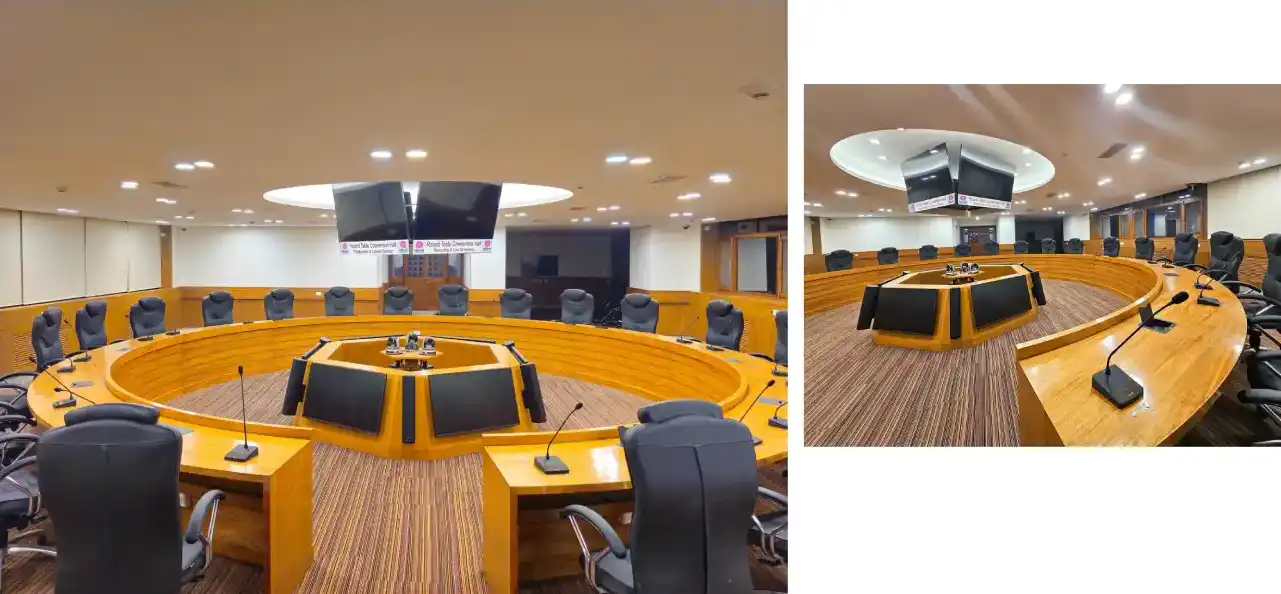
Organic Farming in the Campus
The Organic Farming area, within the campus, supplies organic vegetables and fruits to our faculty members, staff, and students. It operates with a focus on sustainable agricultural practices, using local resources to support natural ecosystems and healthy living. Our organic farming represent our dedication to achieving net zero, promoting sustainability, and engaging with the community.

Societies
The University supports various student societies primarily with the aim of directing students’ creative energies and dynamism in constructive directions towards building a strong character and an integrated personality. SPIC Macay is one such group. By assimilating diverse elements of culture, literature, art, music, dance, nature and sports activities, students can enrich their as well as others’ lives through community service, hone their outdoor skills as explorers, and develop photographic acumen. Nalanda University supports wide-ranging extracurricular activities to match as wide a range of student interest through the Sports Club, Awareness Society, Literary Society, Environment Club, Society for Culture and Arts as well as the Career Resource Cell to name a few.
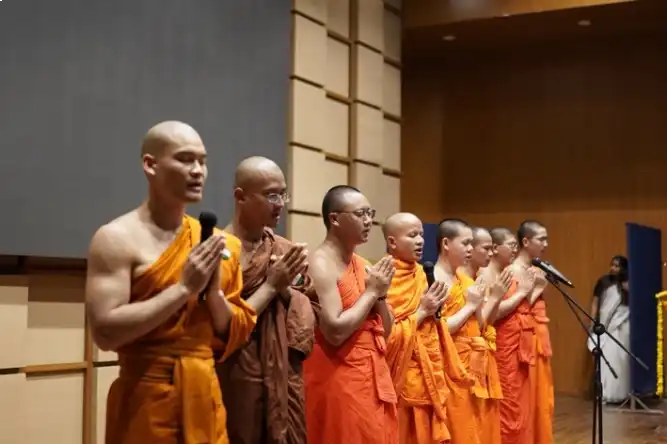
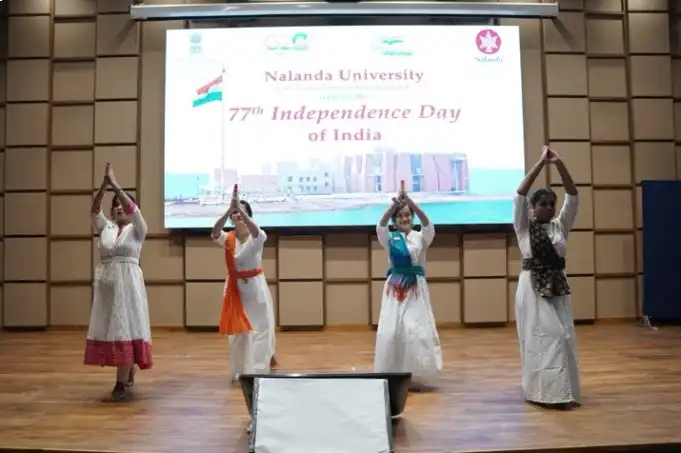
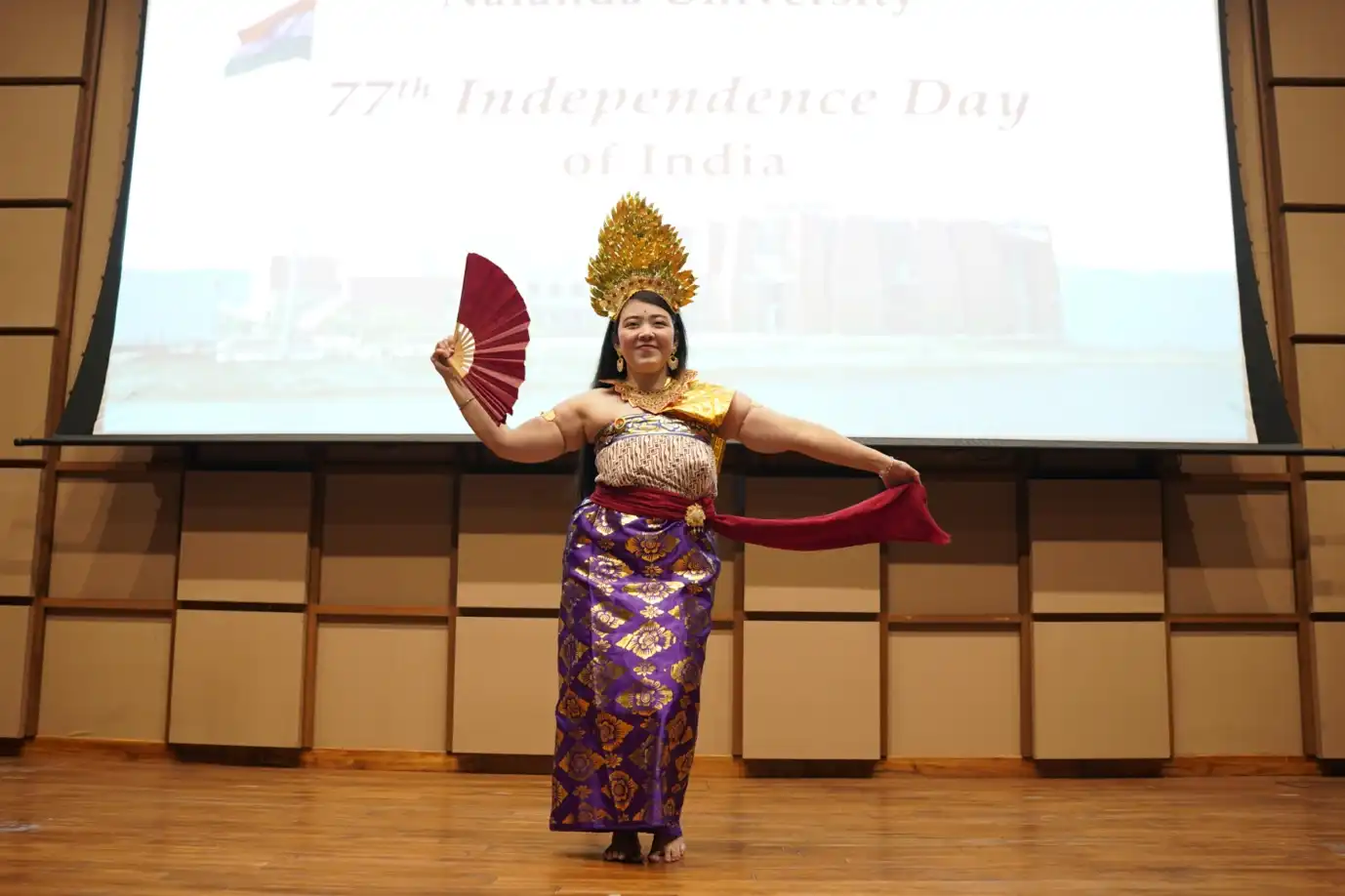
NET-ZERO FEATURES
The campus combined state-of-the-art technologies with planning principles of the ancient Nalanda, in order to create a carbon neutral and zero waste campus. Some of the most important and indigenous aspects and palette of concepts for passive methods operating at different scales are – 6.5 Megawatt Solar PV captive power plant, 1.2 Megawatt Biogas plant, Desiccant Evaporative (DEVAP) technology for cooling/heating of the buildings, Solar integrated thermal storage technology for HVAC system, use of Compressed Stabilized Earth Blocks (CSEB) instead of kiln burnt clay bricks, thick cavity walls to increase thermal resistance, Decentralized Water Treatment (DeWAT) systems, cooling and cleaning of the air through use of selected native plants, climate appropriate landscape design to reduce potable water demand, and application of Building Management System, etc.
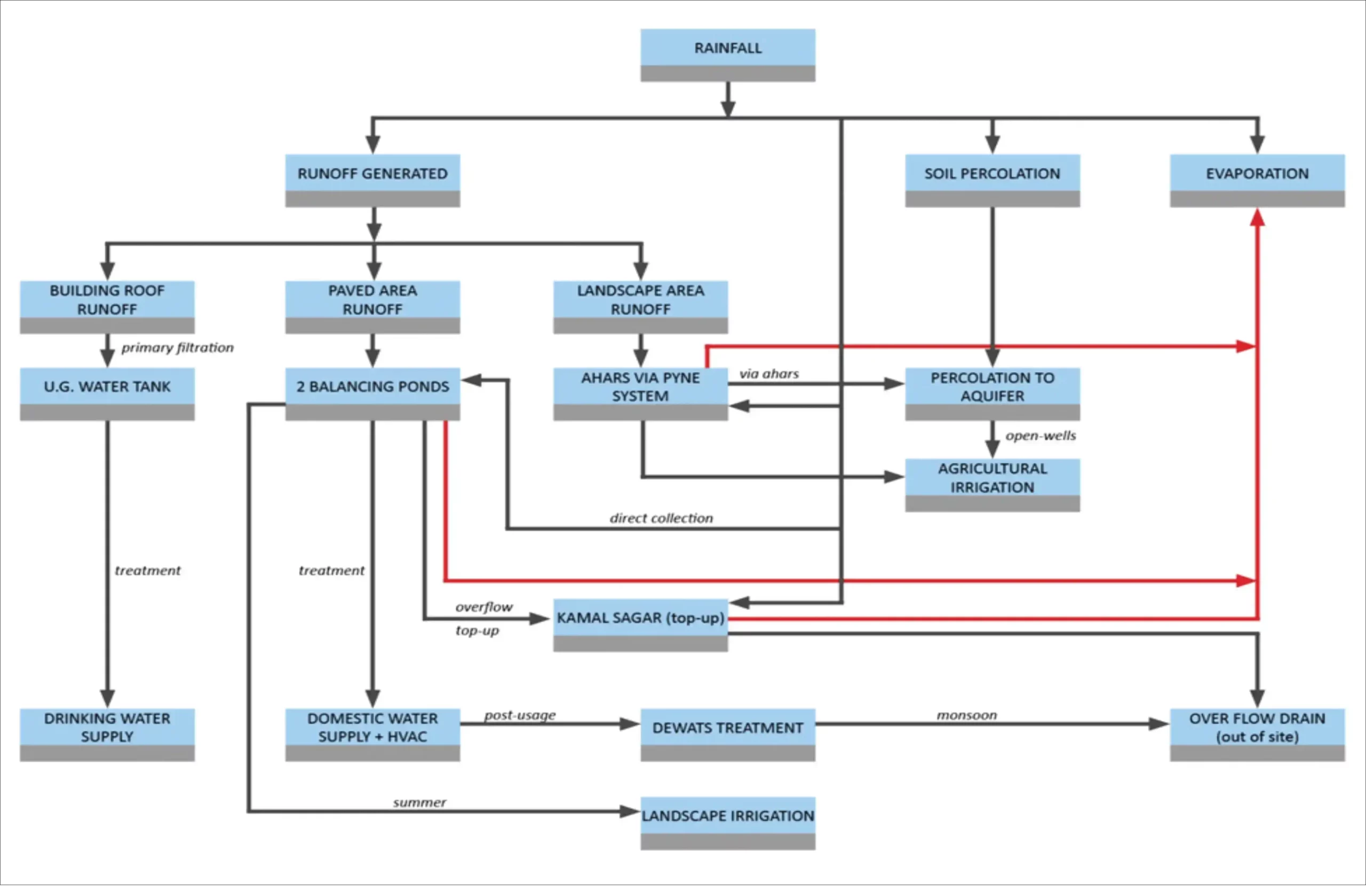
Integrated Water Management Scheme
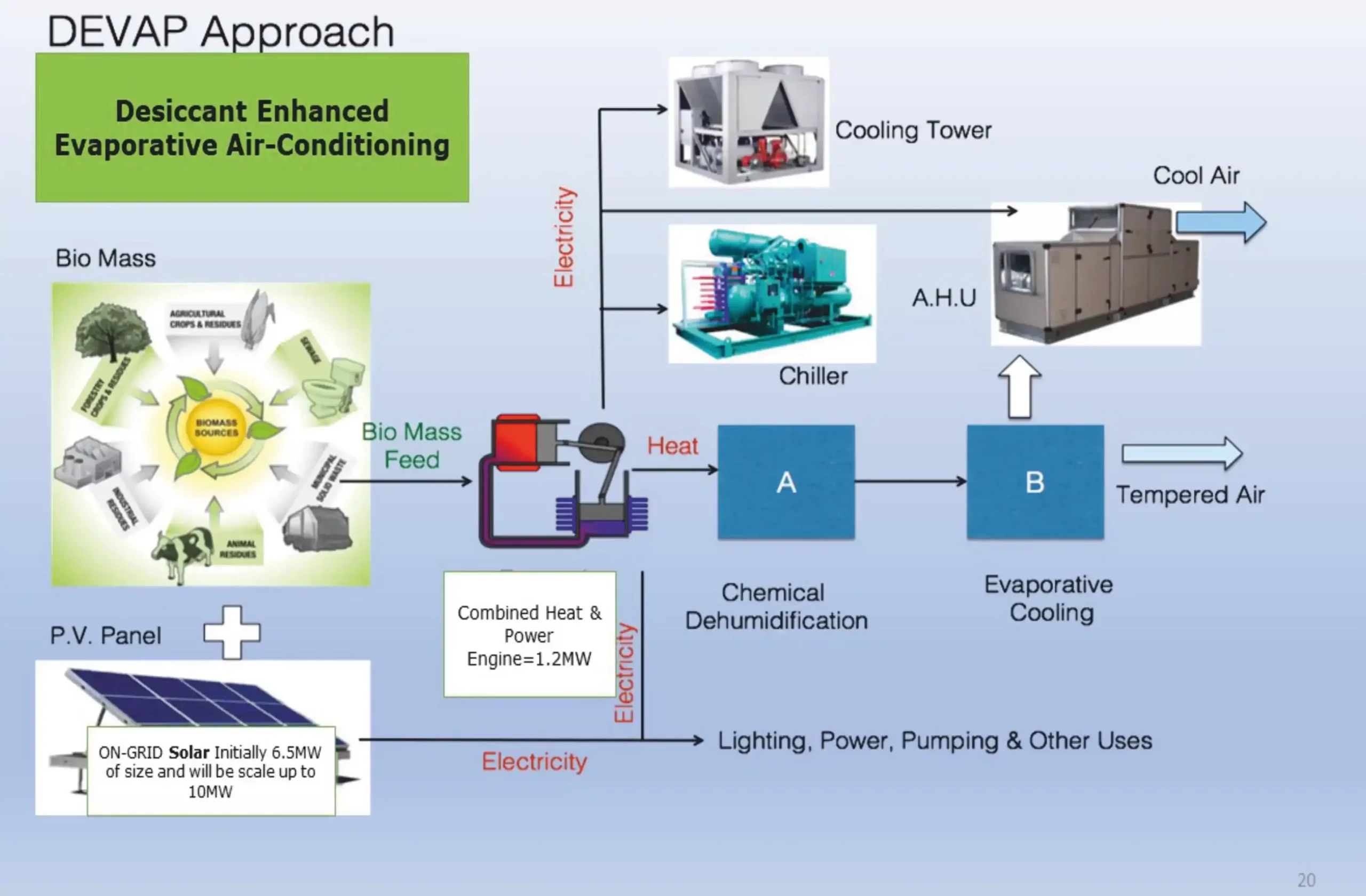
Integrated Energy Management Approach
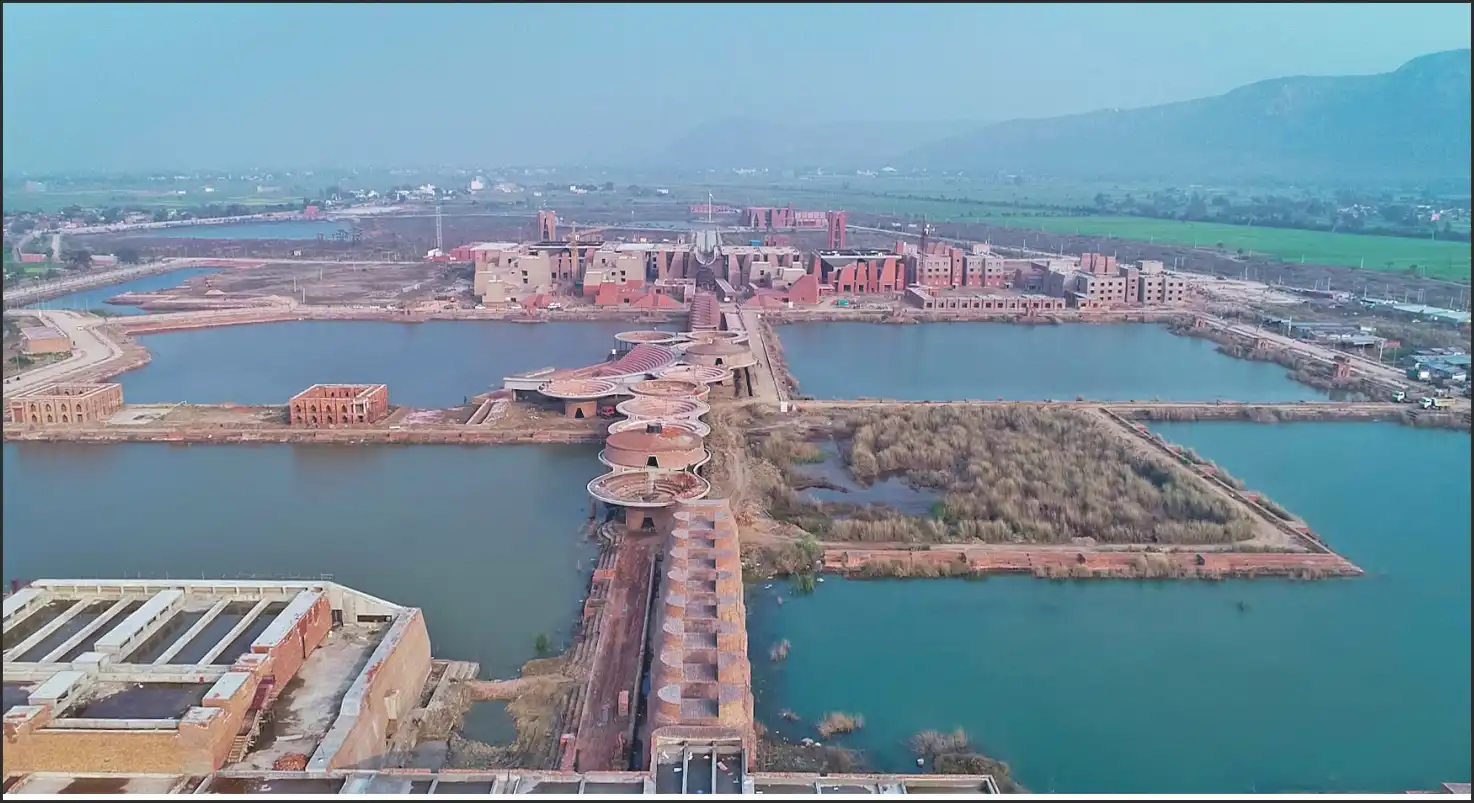
40 Hectares of Waterbodies: traditional Ahar & Pynes helps on-campus rainwater harvesting and management.
This is a Net-Zero Campus bounded by 8.3 kms wall, the Nalanda University campus demonstrates the spirit its motto, i.e.,“Man living in harmony with man; Man living in harmony with Nature; Man living as part of Nature.” The creation of a 455 acres eco-friendly, green, carbon neutral, sustainable campus providing modern and state-of-the-art amenities and comforts, is commensurate with its international stature. The master-plan and structural architecture follow the pathways of sustainability and emphasize upon environmental sensitivity at all levels. Net-zero energy, net-zero emission, net-zero water and net-zero waste have been achieved and sustained.
Separately conserving the top-soil for horticulture, several ponds were excavated in the campus to create 100 acres of water bodies, which in turn were filled with rain-water through an indigenous water management system of ahar-pyne network. Unburnt Compressed Stabilized Earth Blocks (CSEB) were manufactured out of the excavated mud for the construction of over 20,00,000 sq ft built-up area. Passive methods have been adopted for providing natural light, clean air and cooling or moderation of temperature within the buildings ; and the wide implementation of the Desiccant Enhanced Evaporative Air-Conditioning (DEVAP) System, Decentralized Waste Water Treatment (DEWAT) systems can be seen here. Solar integrated thermal storage and geothermal technology for HVAC System, Clean energy is supplied by a 6.5 Megawatt Solar Farm, and a Biogas operated Combined Heat & Power (CHP) engine is also installed. All measures erase the carbon foot-print.
It is an appeal to maintain the pristine and nature-friendly environment of this campus and request to carry with you the net-zero concept for implementation beyond.
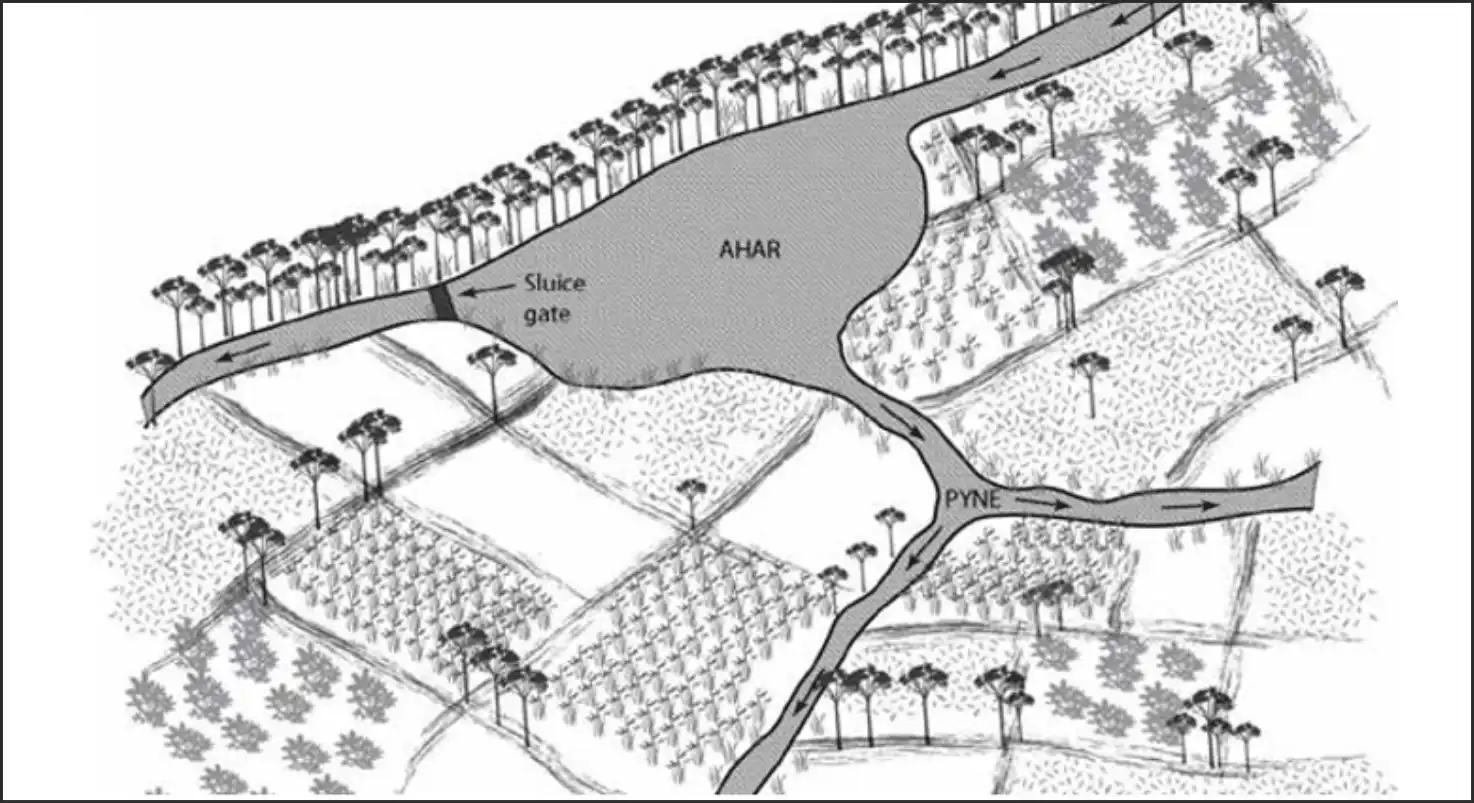
Traditional Ahar-Pyne Water Network
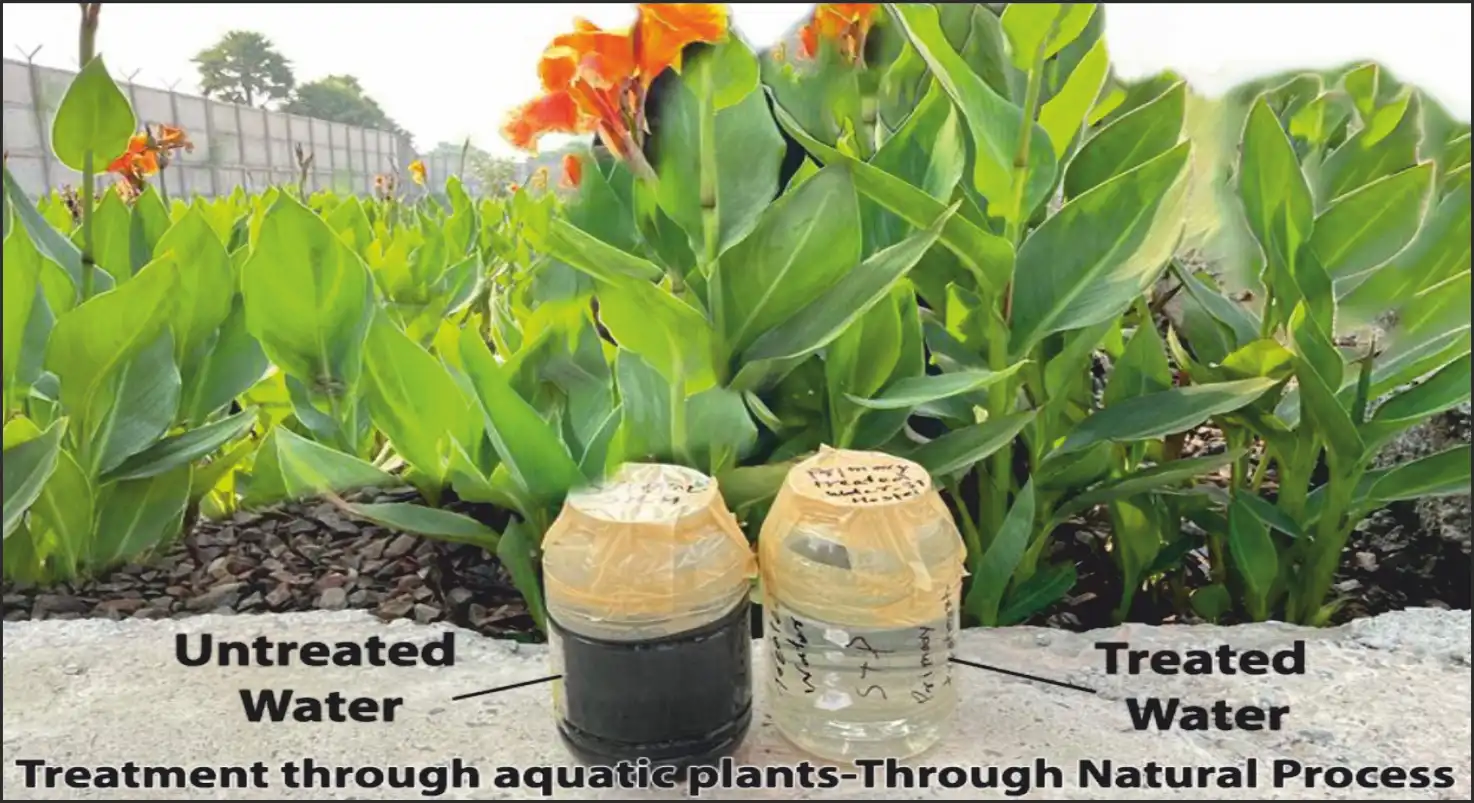
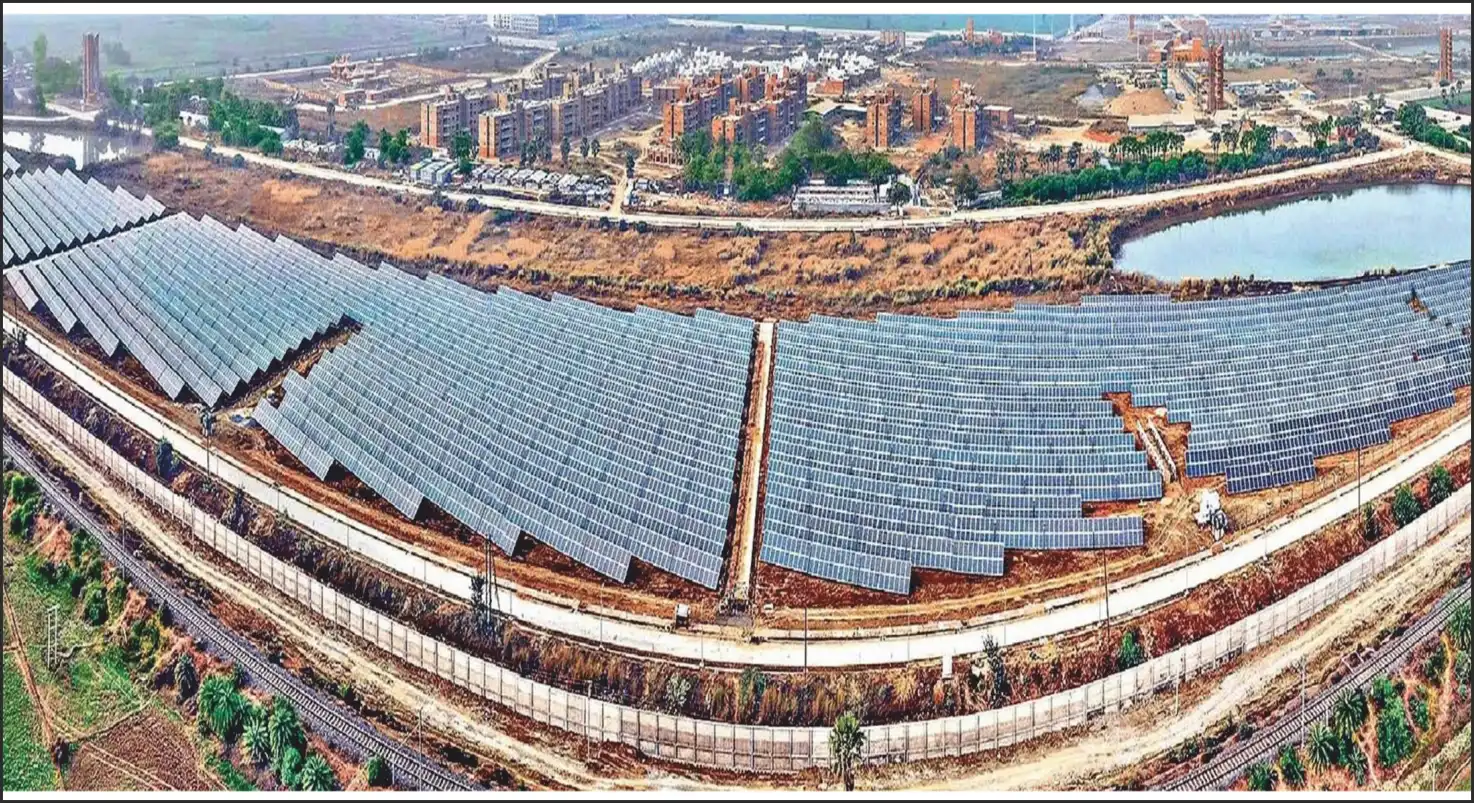
6.5 MwdcSolar Farm : renewable and green energy generation on campus
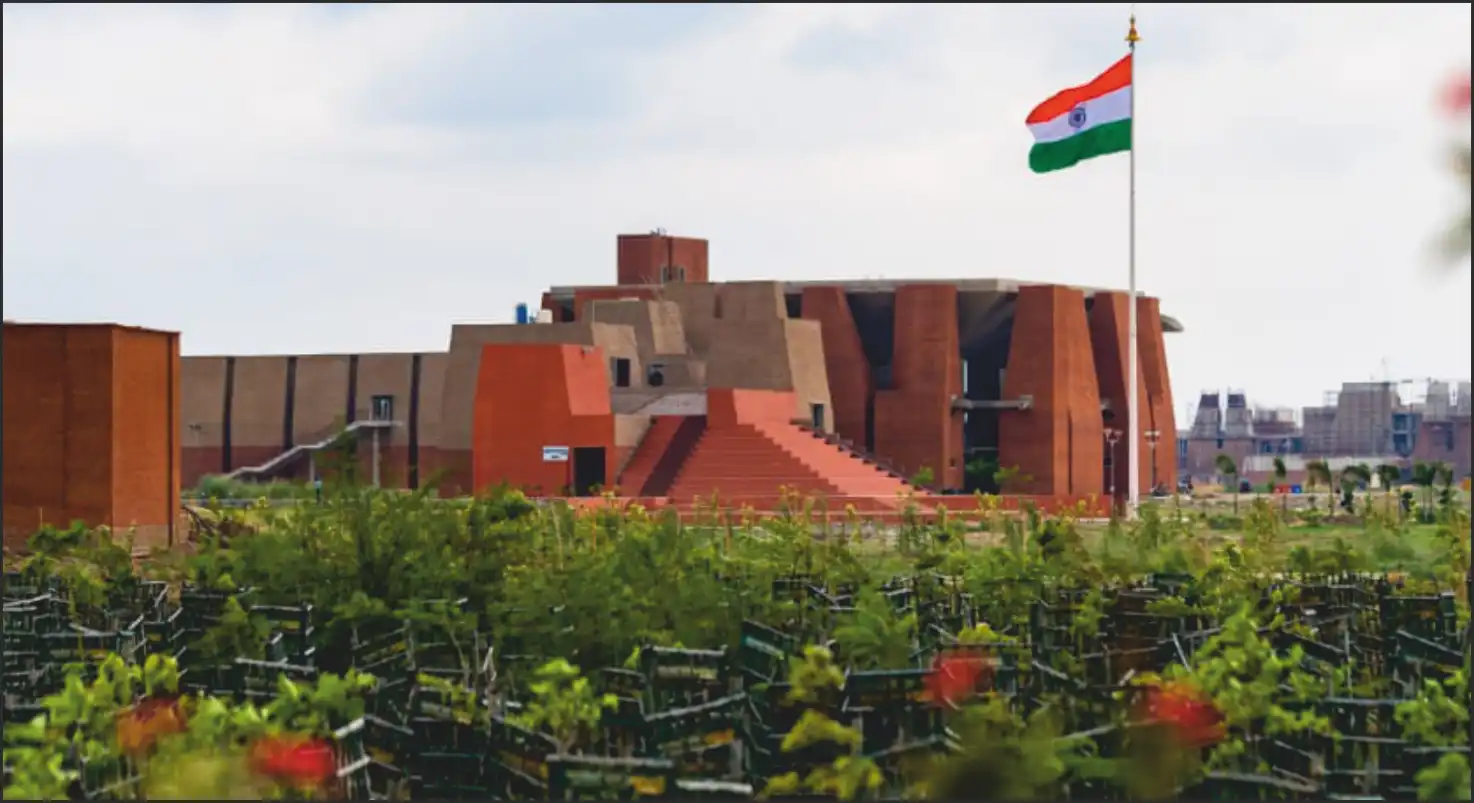
300 Acres of Tree Plantation : absorbs the CO2 and maintains ecology

Unburnt Bricks (made with campus mud soil)

Natural light integration with DALI and Occupancy Sensors
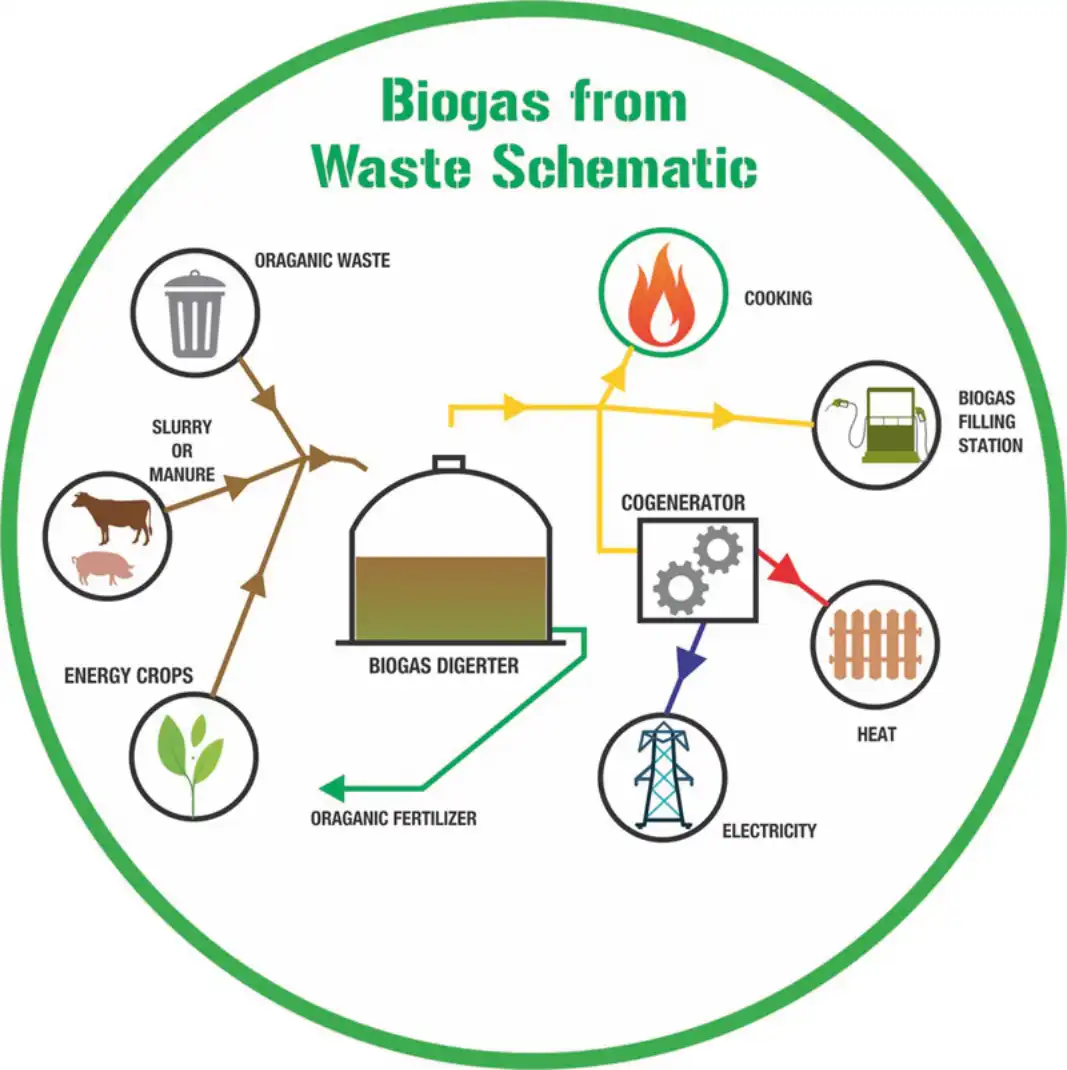
Waste - to - Energy to avoid landfill challenges
Experiential Learning & Outreach
Several outreach programs were designed to engage with Government of Bihar and local communities. The objective of the programs is to build a culture of structured grassroots engagement, which is an important and distinctive feature of the University. Learning is best served when students actively participate, both mentally and physically in the learning process. Field trips are taken to be vital components of learning at Nalanda. Hence, each School organizes supervised and safe recreational field trips at prescribed intervals, when the students experience a more holistic and an integrated picture of the information by accessing it directly. Field trips, thus serve to enhance classroom learning by complementing textual content with a hands-on and interactive experience on a regular basis.
